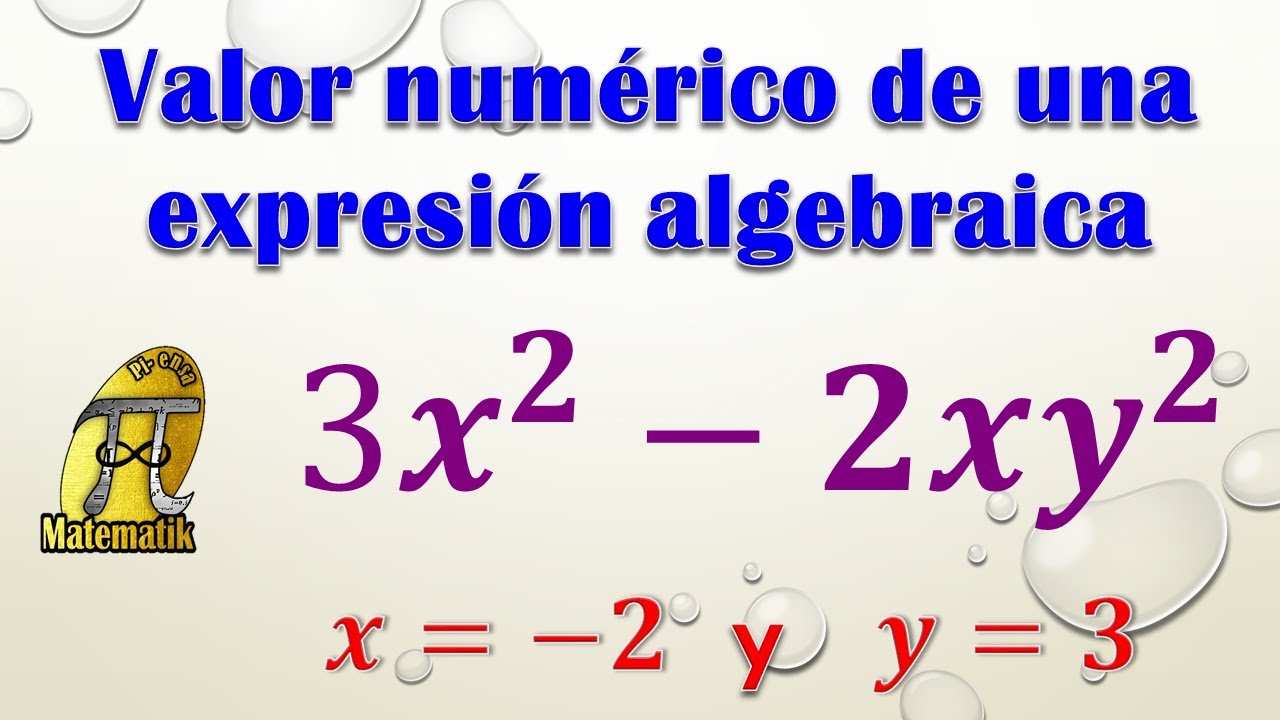How to Determine the Value of Algebraic Expressions

Algebraic expressions are an essential part of mathematics, and understanding their value is crucial for solving various mathematical problems and equations. Determining the value of an algebraic expression involves a systematic approach and a solid grasp of mathematical concepts. In this comprehensive guide, we will delve into the methods and techniques to evaluate algebraic expressions accurately.
Understanding Algebraic Expressions

Algebraic expressions are mathematical phrases that consist of variables, constants, and mathematical operations such as addition, subtraction, multiplication, and division. These expressions are used to represent unknown quantities or relationships between variables. For instance, the expression 2x + 3 represents the sum of twice the value of x and the constant 3.
The value of an algebraic expression depends on the specific values assigned to the variables. By substituting these values, we can evaluate the expression and obtain a numerical result. Let's explore the step-by-step process to determine the value of algebraic expressions.
Step-by-Step Guide to Evaluating Algebraic Expressions

-
Identify the Variables
The first step is to identify the variables present in the expression. Variables are typically represented by letters such as x, y, z, or any other symbol. Recognizing the variables allows us to understand the unknown quantities we need to evaluate.
-
Assign Values to Variables
To determine the value of the expression, we need to assign specific values to the variables. These values can be chosen based on the context of the problem or provided in the question. For example, if we have the expression 3x + 2, we might choose x = 5 to evaluate it.
-
Substitute and Simplify
Once we have assigned values to the variables, we substitute these values into the expression. This involves replacing the variables with their corresponding values. After substitution, we perform the necessary mathematical operations to simplify the expression and obtain a numerical result.
Continuing with our example, if we substitute x = 5 into 3x + 2, we get 3(5) + 2 = 15 + 2 = 17. Thus, the value of the expression 3x + 2 for x = 5 is 17.
-
Evaluate for Multiple Variables (Optional)
In some cases, algebraic expressions may involve multiple variables. To find the value of such expressions, we need to assign values to all the variables and repeat the substitution and simplification process for each combination of values. This allows us to explore different scenarios and understand the behavior of the expression.
For instance, consider the expression 2x + 3y - 5 with variables x and y. If we assign x = 3 and y = 2, we substitute these values and simplify: 2(3) + 3(2) - 5 = 6 + 6 - 5 = 7. So, the value of the expression for these specific values is 7.
-
Analyze Patterns and Relationships
Evaluating algebraic expressions often reveals patterns and relationships between variables. By analyzing these patterns, we can gain deeper insights into the mathematical properties and behaviors of the expression. This analysis can help us make predictions, identify trends, and solve more complex problems.
Real-World Applications and Examples
Algebraic expressions are not limited to theoretical mathematics but have numerous real-world applications. Here are a few examples where evaluating algebraic expressions is essential:
- Engineering and Physics: In engineering and physics, algebraic expressions are used to model various phenomena. For instance, calculating the kinetic energy of an object involves evaluating the expression KE = 0.5mv^2, where m is the mass and v is the velocity.
- Finance and Economics: Algebraic expressions are prevalent in finance and economics. For example, calculating compound interest uses the expression A = P(1 + r/n)^(nt), where A is the final amount, P is the principal amount, r is the interest rate, n is the number of times interest is compounded per year, and t is the time in years.
- Computer Science: In computer science, algebraic expressions are used for various algorithms and calculations. For instance, evaluating an arithmetic expression in a programming language involves substituting variables with their values and performing the operations.
Performance Analysis and Optimization
When working with complex algebraic expressions, performance analysis and optimization become crucial. Large expressions with multiple variables and operations can be computationally intensive. Here are some strategies to optimize the evaluation process:
- Simplification: Simplifying algebraic expressions before evaluation can reduce the computational load. Techniques like combining like terms, factoring, and canceling common factors can lead to more efficient calculations.
- Order of Operations: Following the correct order of operations (PEMDAS: Parentheses, Exponents, Multiplication/Division, Addition/Subtraction) ensures accurate results. Adhering to this order prevents errors and ensures the expression is evaluated correctly.
- Use of Technology: In complex scenarios, utilizing mathematical software or programming languages can streamline the evaluation process. These tools can handle large expressions, perform symbolic calculations, and provide accurate results.
Future Implications and Advances

The field of algebraic expressions and their evaluation continues to evolve with advancements in mathematics and technology. Here are some potential future implications and developments:
- Symbolic Computation: The development of more advanced symbolic computation software could revolutionize the evaluation of algebraic expressions. These tools could provide automated simplification, factorization, and optimization, making complex calculations more accessible.
- Artificial Intelligence and Machine Learning: AI and machine learning algorithms can be trained to recognize patterns and relationships in algebraic expressions. These technologies could assist in predicting values, identifying trends, and solving complex mathematical problems.
- Quantum Computing: Quantum computing holds the promise of solving highly complex mathematical problems with unprecedented speed. The ability to evaluate algebraic expressions with quantum algorithms could open up new frontiers in mathematics and computational power.
Conclusion
Evaluating algebraic expressions is a fundamental skill in mathematics with wide-ranging applications. By following a systematic approach, we can accurately determine the value of expressions and gain insights into their behavior. As mathematics and technology advance, the future of algebraic expression evaluation looks promising, with potential breakthroughs in symbolic computation, artificial intelligence, and quantum computing.
What are some common mistakes to avoid when evaluating algebraic expressions?
+Common mistakes include incorrect substitution, overlooking the order of operations, and not simplifying expressions before evaluation. Always double-check your work and ensure you follow the correct mathematical rules.
Can algebraic expressions have multiple solutions?
+Yes, some algebraic expressions can have multiple solutions depending on the values assigned to the variables. This is especially true for equations with multiple variables, where different combinations of values can lead to valid solutions.
Are there any online tools or software that can help evaluate algebraic expressions?
+Absolutely! There are various online calculators and mathematical software programs that can assist in evaluating algebraic expressions. These tools often provide step-by-step solutions and can handle complex expressions.



